Whether you like them sweet or hot, peppers are a great addition to your kitchen repertoire. You’ll love having them in your garden because they are easy to grow, delicious to eat, and full of nutrients.
You can eat them fresh, cook them, freeze them, and can them to preserve them for the future. Follow this guide for an in-depth review of how to plant, grow, and harvest peppers.
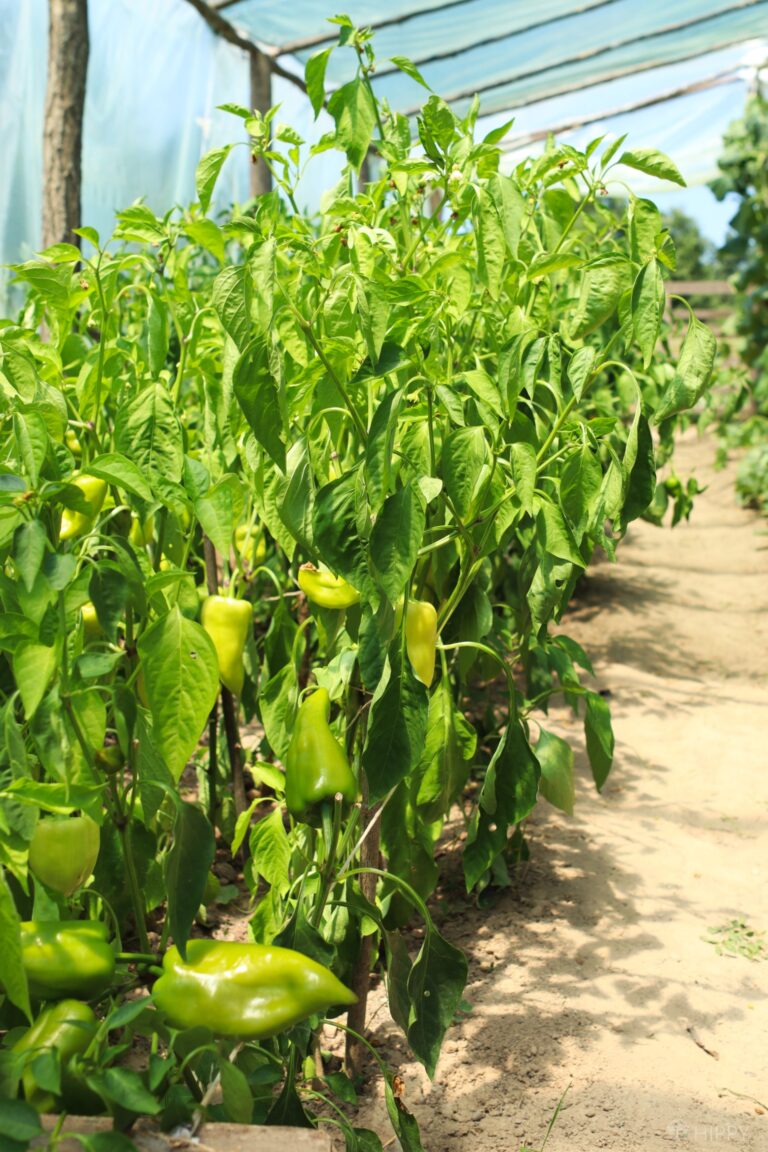
Table of Contents
Pepper Basics
- Botanical name: Capsicum. Peppers come from the nightshade family known as Solanaceae. Peppers are native to America, but are cultivated all over the world and used in many different cuisines.
- Plant type: Although we think of peppers as vegetables, they are technically a fruit because you eat the part of the plant that contains the seed. In tropical areas, bell peppers can be grown as a perennial, but in colder more northern climates they are grown as annuals because they do not tolerate cold weather. Look to grow peppers as annuals in planting zones 8 and lower. Peppers can be grown as perennials in zones 9 through 11.
- Growing season: Peppers need a long growing season, up to 90 to 100 days. In areas that have a short growing season (a.k.a. the shorter your summer), you’ll need to start your peppers indoors.
- Hardiness: Peppers do well in the heat, but do not tolerate cold.
Varieties
- Bell Pepper. Bell peppers are favored for their sweet taste, large size, and rainbow of colors including green, yellow, orange, red, purple, and chocolate. Their mild flavor makes them versatile for many different dishes and their large size also makes them great for stuffing. Spice Level (SHU) – 0.• Mini Sweet Pepper. These little cuties are similar in taste and appearance to bell peppers, but are smaller, sweeter, and have less seeds. You can use them just as you would use a bell pepper. Spice level (SHU) – 0.
- Cubanelle Pepper. This long sweet pepper has a little bit of spice to it. It is light greenish to yellow with a long shape, and slightly wrinkly thin skin. They are great for frying and roasting. Spice level (SHU) – 100- 1000.
- Banana Pepper. Shaped for their namesake, these peppers are yellow in color with a long, curved shape. Banana peppers have a tangy taste and are often pickled. Spice level (SHU) – 0 to 500.
- Cherry Pepper. Pimiento or cherry peppers are small, heart-shaped red papers. These peppers are sweet and mild but with a more intense aroma. Spice level (SHU) – 100 to 500.
- Poblana Pepper. Poblanas are a hot pepper, but on the milder end of spicy. They have a thick flesh similar to a bell pepper, but with a kick. They are large and can be stuffed, grilled roasted, and sauted. Spice level (SHU) -1000 to 1500.
- Jalapeno Pepper. Jalapenos are one of the most popular of the host peppers, but not the most spicy. They are a key ingredient in guacamole. Spice level (SHU) 2500 to 8000.
- Fresno Pepper. Fresno peppers are similar in appearance to jalapenos, but are spicier, fruitier, and have a slightly smokey taste. Spice level (SHU) 2500 to 10,000.
- Serrano Peppers are long, thin and red with a good bit of heat. The skins are thin and the peppers are great roasted, charred, and chopped for salads, chili, and salsa. Spice level (SHU) – 10,000 to 23,000.
- Thai Pepper. Thai peppers come in many varieties, but are small, red, and hot! Spice level (SHU) -50,000 to 100,000.
The Best Location for Growing Peppers
Generally speaking, pepper plants need a full five to eight hours of sun during the day to grow fruit.
However, in the hottest parts of the summer, too much sun can cause the plants to scald and drop fruit. So choose a sunny spot that receives full – but not too much – sun.
Do not plant peppers in a spot where you have recently had other nightshade plants such as tomatoes, eggplants, or potatoes. This can spread diseases to peppers.
Soil Requirements
Peppers have a very wide root spread, so you’ll want to create a loose soil that is rich and well-draining. For this reason, you may want to amend your soil with sand and compost. This will also ensure that your soil warms quickly.
Your soil should have pH of 5.8 to 6.5. If your soil pH is too low, you can add lime. If your soil pH is too high, you can add sulfur to lower it. Getting your soil just right will help your pepper plants to thrive.
Soil Temperature
Peppers do not tolerate cold or temperature swings well. For germination to occur, your soil needs to be above 75 degrees Fahrenheit (23 Celsius).
If you need help keeping your soil warm, use black plastic over the soil, creating holes just big enough to plant your seedlings in.
Make sure the temperatures do not drop below 60 degrees Fahrenheit (15 Celsius) at night. Consistent temperatures will help the plants grow more fruit.
Planting Pepper Seeds
Planting depth is based on the size of the seeds, and for peppers, that means planting them about ¼ of an inch deep. Under ideal conditions, pepper seeds should sprout within 7 to 21 days.
Starting Pepper Seeds Indoors
Because peppers have such a long growing season, it is generally best to start them indoors rather than direct sowing them into the garden.
To keep the soil temperature above 70 degrees Fahrenheit (21 Celsius), you might want to use a heat pad under your seed tray, or germinate the peppers in a warm room.
Use a seed starting medium that will keep the seeds moist, but not soggy.
You can cover seed trays with clear plastic wrap or a seed germination cover to keep the humidity stable and the temperature warm, but make sure you remove it after seeds sprout in order to prevent mold or damping off.
Hot pepper seeds can be more difficult to germinate than sweet peppers. If you are having trouble sprouting your hot pepper seeds, you can try the baggie method of seed starting.
Place seeds on a folded, damp paper towel, and slide the paper towel into a baggie.
Place the baggie somewhere warm, such as the top of your refrigerator. Check the baggie every couple of days to see if the seeds have sprouted. Once the seeds have sprouted you can plant them into pots.
Start seeds indoors eight to ten weeks before your last frost date. You can find your last frost date here. Before transplanting your seedlings into the garden, you’ll need to harden them off, first.
Hardening off seedlings is relatively simple. Bring them outside a little bit at a time in a more sheltered spot when the weather isn’t harsh.
Each day, increase the amount of time the seedlings are outside. After a week or two of hardening off, your seedlings should be ready to transplant into your garden.
Direct Sowing Pepper Seeds
Technically, you can direct sow your pepper seeds right into the garden. However, most locations have too short of a growing season for this. Southern gardeners will have more luck with direct sowing pepper seeds than northern gardeners in the United States.
Growing Peppers from Seedlings
If you don’t want to start peppers from seeds, you can purchase pepper plants from your local nursery or big box store. Do not set out your pepper plants before the last frost, even if they are established plants.
Peppers are not frost hardy. Plant them into the same type of soil that you would direct sow in your garden, but be sure to plant them approximately 18 to 24 inches apart. Water as soon as you transplant your peppers in to the garden.
Transplanting Peppers
Peppers do transplant well but be sure that you transplant them at soil level. If you plant peppers too deep, and cover too much of the stem, the growth of the pepper will be stunted.
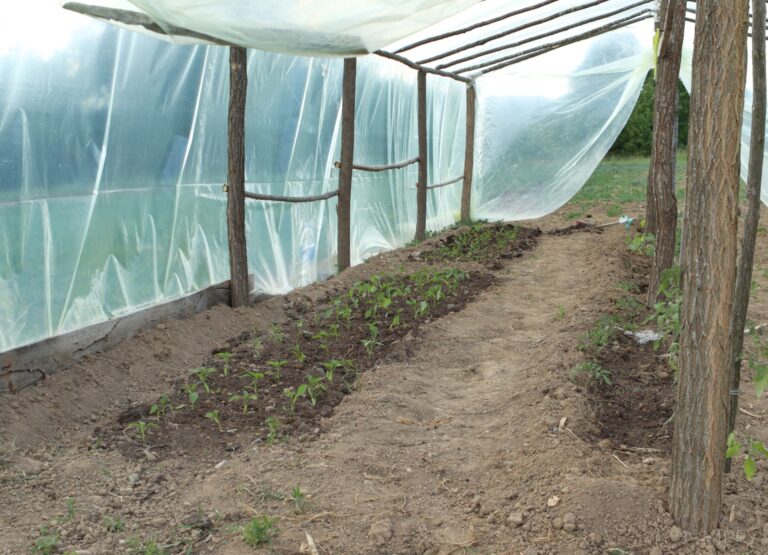
Pinch Off Early Blooms
Sometimes, young pepper plants will bloom when they are small. If you see flowers on your seedlings, pinch them off. This won’t hurt your pepper plants and it will not hurt overall fruit production.
This will actually help your peppers direct their energy into growing into healthy, established plants. Otherwise, the plants will put their energy into growing fruit before the plant is large enough to sustain the fruit.
Companion Planting
Companion planting may help your plants to thrive. Members of the Allium family do well when planted in proximity to peppers. These are vegetable plants such as squash, radishes, carrots, and cucumbers.
You can also plant eggplant, lettuce, spinach, and chard near peppers. Also, try asparagus, endive, oregano, basil, rosemary, and parsley. Do not plant peppers near brassicas (such as broccoli), beans, or fennel.
Watering
For the best development of your pepper plants and fruit, you’ll want to keep your soil moist without letting it stay soggy. Mulching around your pepper plants will help conserve the moisture in the soil.
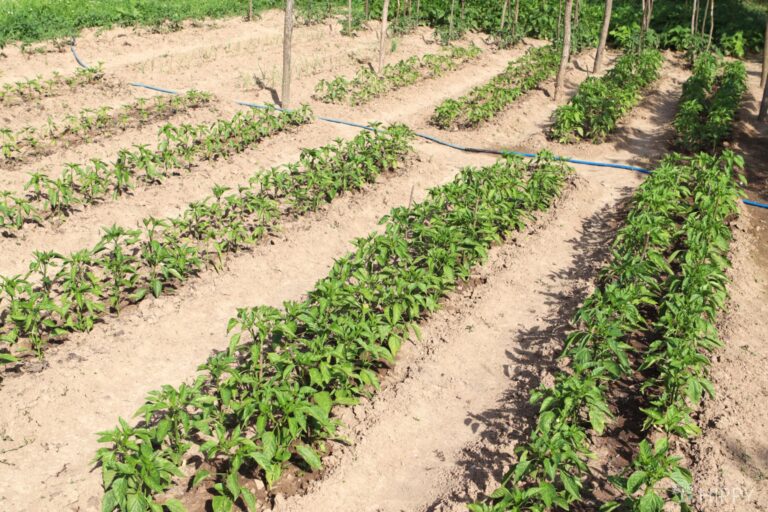
Fertilizing Peppers
Before planting your seeds or seedlings, prepare your soil by adding fertilizer in the ground. This first application of fertilizer should have more phosphorus and potassium than nitrogen.
Look for a fertilizer that has a 5-10-10 ratio. Once the peppers are established, fertilize with a more balanced fertilizer according to the label.
Too much nitrogen in the soil will grow plants that have a lot of foliage but little to no fruit. If you have too much phosphorus, you’ll have lots of fruit but not enough plant to support fruit development.
Harvesting
Different varieties of peppers will mature at different rates. For example, sweet peppers usually will mature between 60 and 90 days.
Other peppers can take up to 150 days to mature, so you’ll need to plan your season accordingly. Your seed packets will give you a good idea on how quickly your plants will mature.
The color and size of the pepper will help you know when it is the right time to harvest.
For example, when you grow sweet peppers, you would usually harvest them when the fruit is full size and the fruits are rich green.
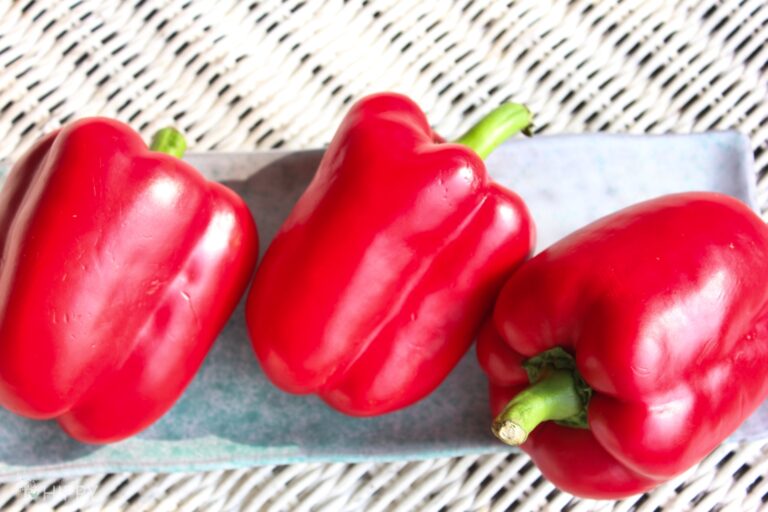
You can leave the peppers on the plant longer, and they will become sweeter and change into yellow or red peppers.
If you grow hot peppers, you will probably harvest them when they are a rich dark green color. Other varieties will need to turn orange to red before they are ripe.
If you continue harvesting peppers as they mature, your pepper plants should continue to produce good fruit until the cooler fall weather. Banana peppers are harvested when they are yellow, and sweet pimientos are ready when they are four inches around and turn red.
Be careful when you harvest your peppers. The branches will break easily if you twist or pull on the pepper too hard. Instead, use scissors, pruners, or a sharp knife to cut the pepper from the plant.
When harvesting hot peppers, be careful not to touch your face or eyes because the oil from the pepper can be easily transferred to your hands and face, where it could burn your eyes or skin. You may prefer to wear gloves when harvesting.
Saving Pepper Seeds
Saving pepper seeds is easy and rewarding. Over time, by continually saving seeds from the most vigorous plants with the best tasting fruit, you can improve the variety of peppers that you are growing.
To save seeds, leave the peppers on the plant until they are ripe and beginning to wrinkle. Once they are completely mature, remove the seeds and place them on paper towels to dry, but keep them out of direct sunlight.
Remove any damaged or discolored seeds. Once the seeds are dry and brittle, they are ready for storage.
If seeds are stored properly, they can stay viable for several years. The seeds should be kept dry and stored in a cool, dark place.
Overwintering
Although peppers are annuals in most growing zones, they can be overwintered indoors with a little extra care.
It might not be worth the work for a run of the mill green bell pepper, but if you have a specialty pepper or a variety that you especially love, it might be worth the work.
The bonus of overwintering pepper plants indoors is that you can get a jumpstart on the growing season the following spring and have a longer fruiting period.
Overwintering peppers does not mean the plant will continue to produce fruit, because there won’t be enough light for the pant to do that unless you have a heated greenhouse with supplemental lights.
- Spray the plant down to wash off any dirt or bugs.
- Remove all fruit from the plant.
- Keep the plant in a cool dry location, such as a basement, that will remain around 55 degrees Fahrenheit. The pepper plant should be near a window or florescent light.
- Water the plant every three to four weeks, as they will be dormant and won’t need as much water. Keep the soil slightly moist but not soggy.
- The plant will begin to die back and will drop leaves. You can prune the plant, but leave about one to two inches above each “Y.”
- One month before your last frost date, bring your pepper plants to a warmer and brighter spot, and resume watering. New growth should begin in about a week. Be sure to acclimate the plant to the outdoors before transplanting in your garden, just as you would harden off new seedlings.
Pepper Spice Scale
Wilbur Scoville created a test to measure the heat and intensity of chili peppers. This later because known as the Scoville Scale, which measures in units called Scoville Heat Units, or SHUs.
This scale will give you an idea of how hot a pepper is in relationship to other peppers. Find more information on the Scoville Scale at:
https://www.chilipeppermadness.com/frequently-asked-questions/the-scoville-scale/
Growing Peppers in Containers
If you don’t have room for a garden, you might try growing peppers in containers on your patio or in your backyard. Peppers with small fruits and a bushier, more compact plant are better choices for pots.
For example, Redskin and Mohawk are sweet peppers that are well suited to container growing, and Apache is a hotter pepper that can be grown in containers.
The benefit of growing peppers in containers is that you can move them into protected spots in bad weather, and move them out of the sun in overly warm weather.
You can also get a jump start on the season by starting them early inside and setting them outside in the sun for a few hours when the weather is warm.
Pepper Growing Problems
Although peppers are relatively easy to grow, they may encounter a problem:
- Curling leaves. If the leaves on your pepper plants are curling, it might be from too much water. Allow the soil to dry out in between waterings.
Pepper Pests
- Missing seedlings. If your seedlings appear to have been cut off near the surface of the soil, you might have cutworms.
- Leaves curl and are deformed and discolored. This may be a sign of aphids. Wash the aphids off with water, and then spray the pepper plants with insecticidal soap.
- Leaves wilt and turn brown and yellow. This may be caused by whiteflies.
Pepper Diseases
- Black spots are visible on lower stems and leaves while the leaves turn brown and yellow. This is a sign of early blight, a fungal disease. Try to avoid overhead watering.
- Leaves turn yellow and then die. The stem of the plant has brown streaks. Eventually, the stem will split and the plants will die. This is verticillium wilt; practice good crop rotation to prevent verticillium wilt.
Safely Handling Hot Peppers
Hot peppers are hot because they contain a compound known as capsaicin.
While everyone reacts differently to capsaicin, it can cause burning or pain if it gets on your skin, in your eyes, or under your fingernails. There are a number of ways to treat the burn of capsaicin:
- If it gets in your eyes or nose, rinse thoroughly with cold water.
- If your mouth burns from eating peppers, try eating yogurt or drinking milk to cool the burn.
- If your hands burn, dip them into a mixture of 5 parts water to 1 part bleach and then rinse.
- Always wash hands thoroughly with soap and water after handling hot peppers.
- Wash all surfaces, cutting boards, knives, and cloths/clothing that may have come in contact with capsaicin to prevent contamination.
Pepper Preservation
Peppers are easy to preserve and can be frozen, dried, and canned.
Freezing Peppers
Peppers are one of the few vegetables that do no need to be blanched before they are frozen.
While the texture of frozen peppers may change slightly, you can still use them in the same ways you would use fresh peppers because they do not become mushy after they are thawed.
To freeze peppers, start by washing and drying them. Remove the seeds and slice or chop the peppers into the desired size and shape.
Put them in a freezer safe container, and store them in your freezer until you are ready to use them. You can defrost them ahead of time or cook them while they are still frozen.
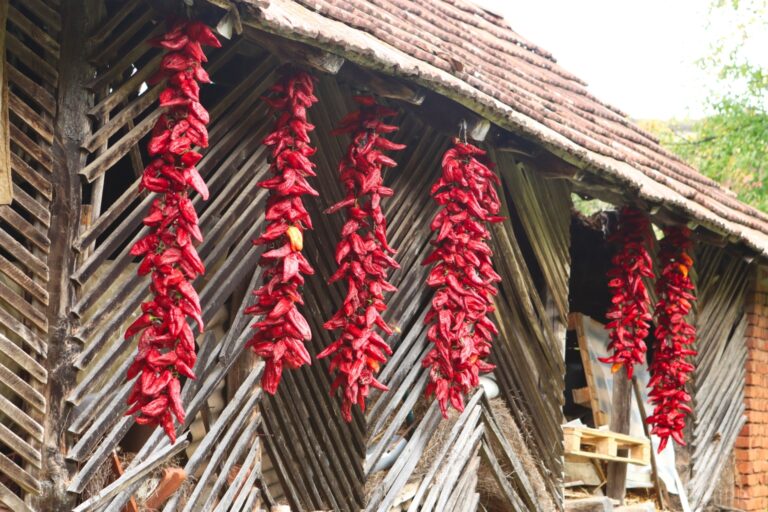
Dehydrating Peppers
Another easy way to preserve peppers is to dehydrate them. Wash and dry your peppers. Remove the seeds and slice or dice them. For best results, keep all of the pieces the same size.
Spread the peppers pieces evenly across the trays of your dehydrator and follow the manufacturer’s directions.
Dried peppers can be stored in mason jars, mylar bags, or baggies. You can grind them with a coffee grinder to make powder, as well.
Dried peppers can be added to soups, stews, omelets, and many other recipes. Take care because the heat in a hot pepper could be intensified in the dehydrating process.
Canning Peppers
Canning peppers involves packing them into a mason jar with a lid, and boiling them for a certain amount of time in order to kill bacteria and seal the jar.
You’ll want to start with a solid canning recipe created by an expert to make sure your process and your peppers are safe to eat.
Pepper-Growing FAQ
Bell peppers are the same, but they appear in many different colors. Generally, a green bell pepper is one that has been picked sooner.
As the peppers mature on the plant, they turn yellow, orange, and then red. The longer a pepper stays on the plant, the sweeter it becomes.
A fresh pepper will last one to two weeks when stored in the refrigerator. Keep the pepper dry and store it in the vegetable drawer. If you want to keep your pepper longer, consider freezing it.
The hottest hot pepper is the Carolina Reaper, which rates 2,200,000 SHU.
A SHU, or Scoville Heat Unit, is a means of comparing how hot peppers are in relationship to each other. A sweet pepper has a SHU of 0, while hot peppers may have a rating of 10,000 or more.
Capsaicin is an oily compound found in hot peppers which is known to give it its ‘heat.’
Yes! Hot peppers and sweet peppers should not be able to cross, but do make sure you follow the directions on your seed packets or plant label in order to space your peppers properly so they have enough room to grow.
Peppers may stop producing fruit and lose their flowers when the weather is very hot.
This phase is generally temporary and nothing to worry about; your peppers will resume blooming and fruit production when the weather starts to cool again.
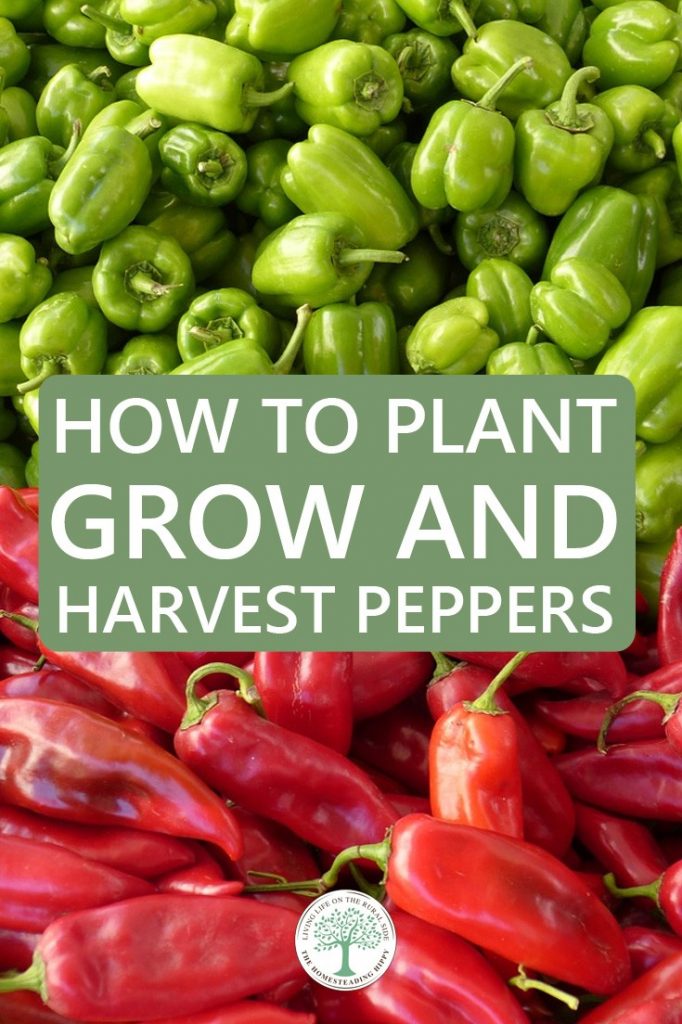
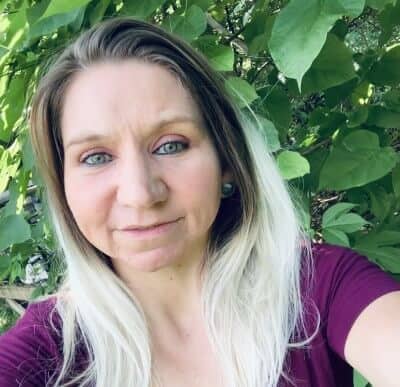
Amanda is a homesteader and a Jesus-loving, mother of 6 toddlers. She’s raising lots of fancy chickens and goats on her small homestead (among other things). Find out more about the team here.
